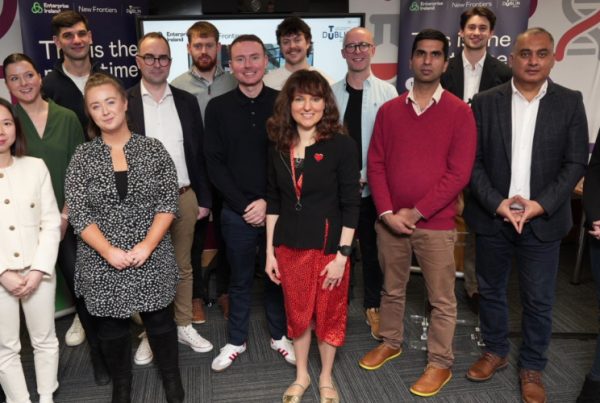
Any new technologies can face a certain degree of hype. Gartner, a US-based IT research firm, developed the hype cycle – a graphical representation of the maturity, adoption and application of specific technologies. Such hype cycles can drive both venture capital and media attention towards the great potential, or lack thereof, of new technologies. Attention is also given to ‘experts’ predicting that a given technology is the future, or the contrary.
In actual fact, it takes many years of testing technologies and evaluating them for different use cases before they’re ready for mainstream use. Standards must also be proposed or adopted in real time, before technology can achieve mainstream adoption to enterprise or consumer level.
Driverless cars and a mushroom analogy
Consider the shape of a mushroom. The stalk represents growth of a technology for two to six to ten years, followed by an explosion of adoption of that technology into different use cases. The technology then resonates with users to the extent that customers can’t imagine what life was like before said explosion (i.e. the iPhone is only ten years old, Hailo only five). Basically, we see apprehension first, a growing buzz about a technology and, at the right time, mainstream adoption follows.
An example of this behaviour is evident in the case of the future technology in driverless cars. Initially, people will be very cautious; we will hear cases of fatal traffic accidents and instances when the car couldn’t differentiate a bike lane from a car lane, 3.5 million truck drivers in the US being laid off, and so on.
However, it’s clear that some consider driverless cars to be the latest ‘mushroom explosion’ in the making, as 2016 saw the online transportation network, Uber, purchasing a driverless truck company for approximately $680 million. Warren Buffet is quoted as saying the biggest risk to banking and insurance conglomerate Berkshire Hathaway is driverless cars, because their widespread use will mean fewer car accidents, and therefore less need for car insurance.
When the cars are ready for mass consumer adoption, infrastructure providers will catch up, and dedicated lanes, electronic signage and municipal vehicles will all play their role in facilitating this emergent technology. Exact timing can’t be predicted, but eventual productivity gains will ensure that technology will facilitate for driverless cars and societal acceptance will follow.
Other emergent technologies
Using this mushroom imagery to explore the stage of development of other new technologies, we would see emergent technologies on the ‘stalk’ as being:
- Augmented/virtual reality technologies
- The mainstreaming of data mining and data analytics at consumer level, as platforms such as Facebook and Google fully monetise their data
- Enterprise-level data analytics insights from equivalent platforms such as Microsoft and SAP
The key issue around innovation, and especially some of the technology-enabled innovation today, is the time it takes to get to the stage of mainstream adoption and how that timeline applies to you or your company. Are you going to invest early and lead, while facing an uncertain length of time along the stalk, or are you going to trail early leaders and join the mushrooming market, but as a follower? The length of the testing phase is hard to predict (ask Blackberry or Nokia), but the outcomes are immense (ask Google or Uber).
I wonder if this mushroom-shape of adoption can be also applied to commentary outside of technology innovation; a long phase of emergent thinking before action – Brexit or Trump anyone?
About the author
 Alan Costello
Alan Costello
Alan Costello is a business consultant and Enterprise Ireland/New Frontiers mentor, helping scaling companies across multiple sectors. Alan is also the founder and managing director of Ruby Consulting, a strategy and innovation-focused boutique consultancy which strives to assist in the growth of companies and to work with business owners and leaders to help orientate planning for action.
After completing his MBA, Alan began working with early-stage startups, VCs, PE firms, universities and enterprise agencies. Alan provides high-value input for small/early-stage/HPSU companies, as well as delivering projects and programmes for public sector agencies, universities, colleges, large corporates, venture capital and many early-stage startups with ambitions to scale internationally.
Recent articles

Founder Perspectives: Lessons From Building Businesses In Sustainability

Tech Startups In The Age Of AI: Alumnus Paul Savage On Speed, Quality & Risk

Fourteen Startup Founders Graduate From Phase 2 Of New Frontiers In Tallaght

Eleven Founders Graduate From New Frontiers In The Border Mid-East Region

Laying The Right Groundwork Helps Startups Prepare For Export Success

Startup In Dublin: Learn More About New Frontiers On TU Dublin’s Grangegorman Campus

Michael Furey On The Success Of Ronspot: “The Most Important Thing Is Research”

 Alan Costello
Alan Costello
